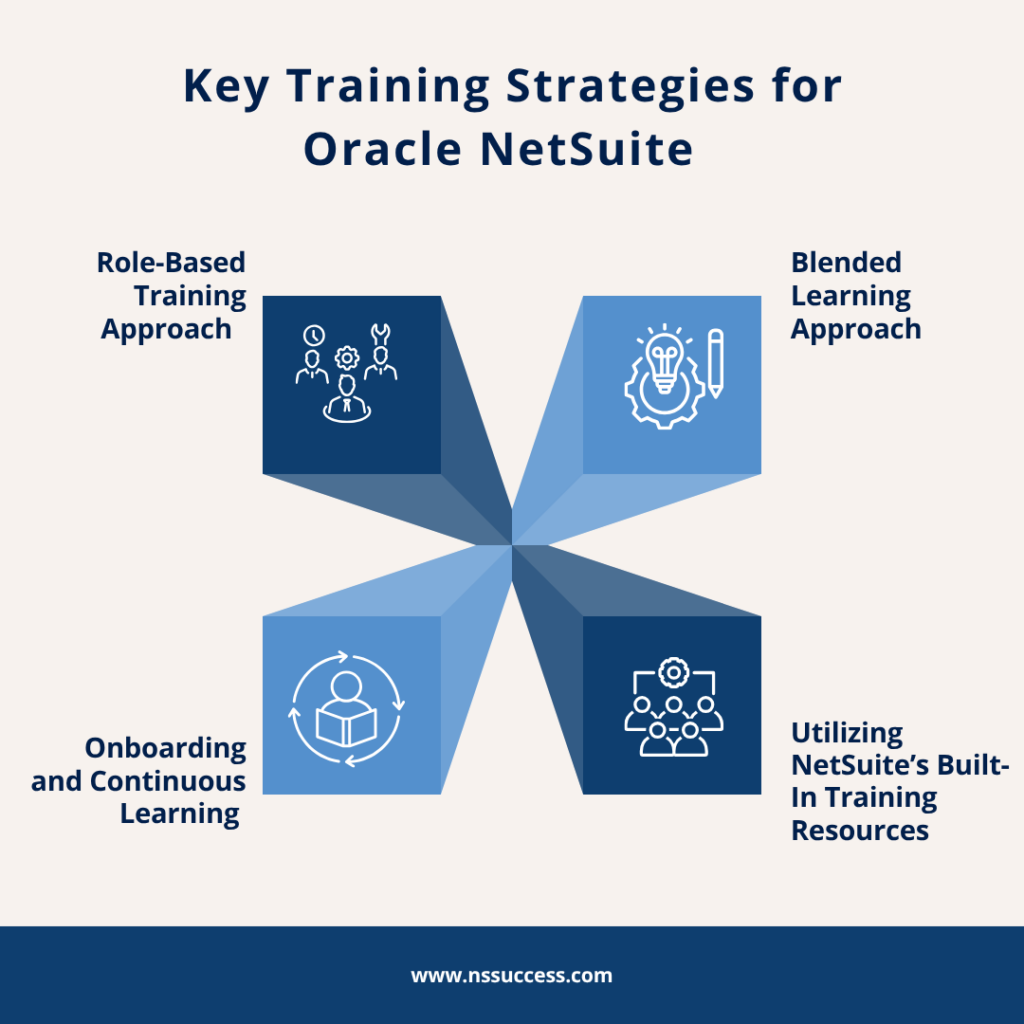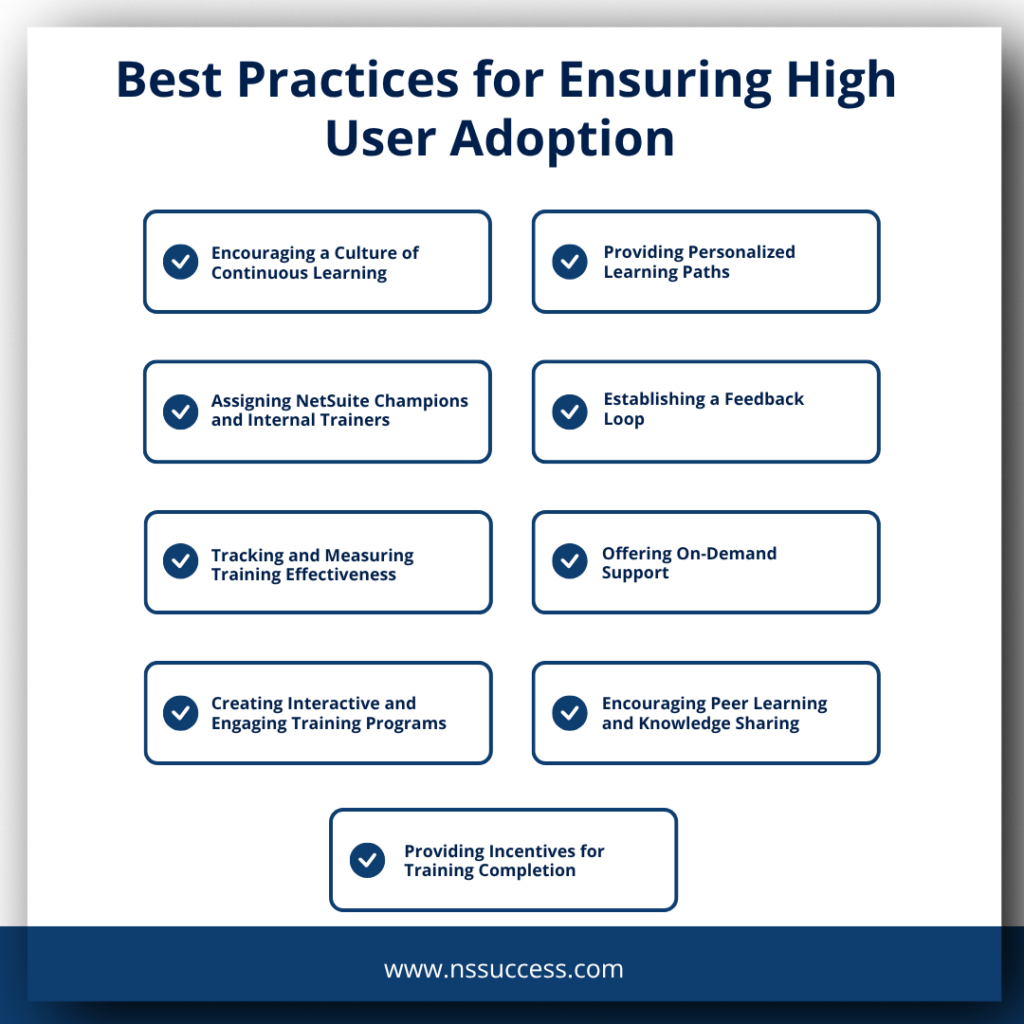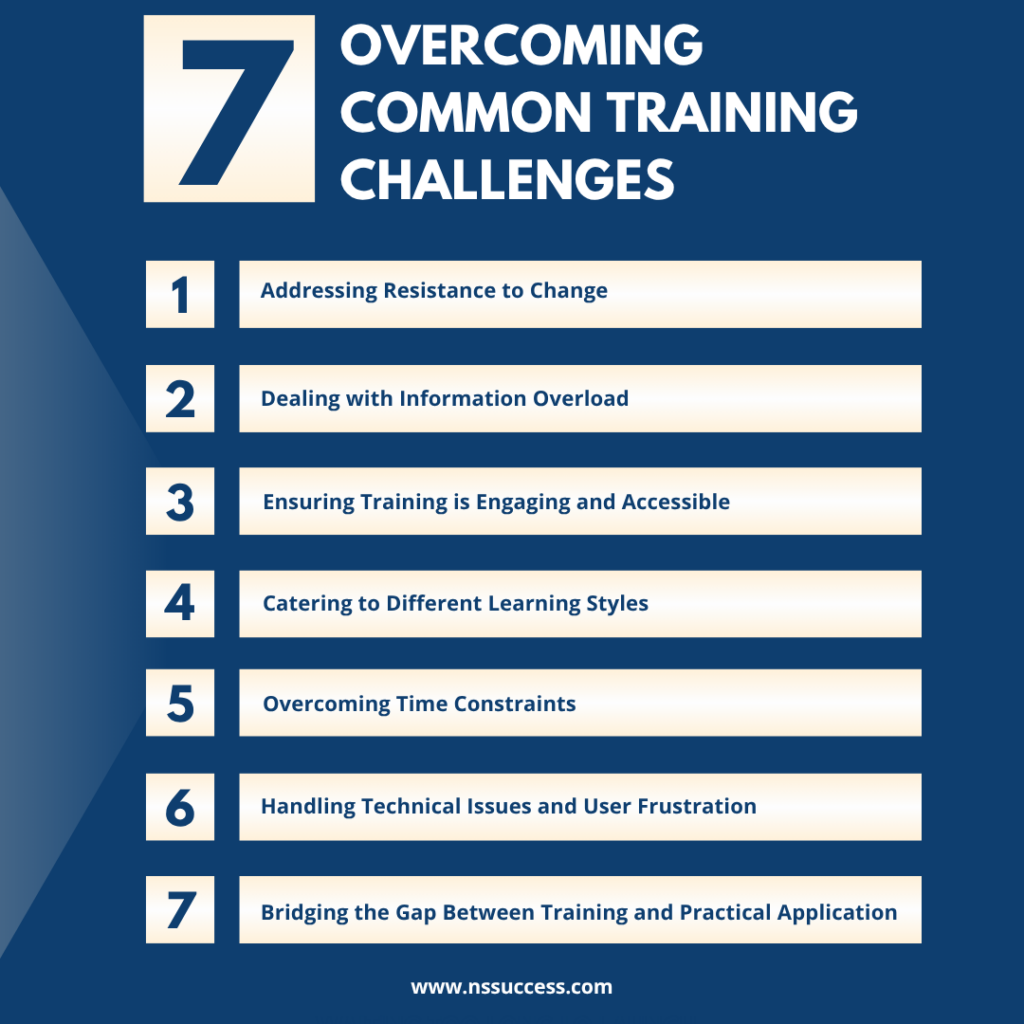Oracle NetSuite is a cloud-based ERP solution that enables companies to optimize their business processes by combining finance, accounting, CRM, supply chain, and e-commerce capabilities into a single platform. As a comprehensive business solution, NetSuite enables organizations to improve efficiency, automate processes, and gain real-time insights into their operations.
NetSuite is widely used by businesses of all sizes, from startups to large enterprises, due to its scalability, flexibility, and ability to support global operations. It empowers companies to manage their finances, optimize resource planning, and enhance decision-making with accurate data analytics. However, while NetSuite offers numerous advantages, its successful implementation and long-term benefits largely depend on user adoption.

Understanding the Need for NetSuite Training
Implementing Oracle NetSuite is a transformative step for any organization, but its success depends on how well employees adapt to and utilize the system. Without proper training, even the most feature-rich ERP solution can become a source of inefficiency, errors, and frustration. This section explores why effective training is essential, the common reasons for low user adoption, and the consequences of inadequate training on business productivity.
Why Proper Training is Essential for NetSuite Implementation Success
A well-planned NetSuite training program is critical for several reasons:
- Smooth Transition to the New System – Employees need to understand how NetSuite works before they can confidently transition from legacy systems. Proper training minimises disruptions and ensures a seamless switch.
- Maximizing Return on Investment (ROI) – Organizations invest significant time and resources in NetSuite implementation. If employees do not fully utilize the system’s capabilities, the investment goes underutilised, reducing potential benefits.
- Reducing Errors and Improving Efficiency – Lack of training can lead to frequent mistakes in data entry, financial reporting, and operational processes. Well-trained users can work more efficiently, reducing costly errors and rework.
- Enhancing User Confidence and Productivity – When employees are trained well, they feel more comfortable using NetSuite’s tools and features. This confidence leads to higher productivity and greater job satisfaction.
- Facilitating Better Decision-Making – NetSuite provides powerful analytics and reporting features. Employees trained to extract and analyse data effectively can make informed decisions that drive business growth.
- Ensuring Compliance and Data Security – Proper training ensures that employees understand compliance requirements, follow security protocols, and maintain data integrity within the system.
- Supporting Business Scalability – As businesses grow, NetSuite must scale with them. A well-trained workforce can leverage NetSuite’s full potential to accommodate expansion and evolving business needs.
Common Reasons for Low User Adoption Rates
Despite NetSuite’s capabilities, many organizations struggle with user adoption due to several key factors:
- Lack of Awareness About System Benefits – Employees may not fully understand why NetSuite is being implemented or how it will improve their workflow, leading to resistance.
- Inadequate Role-Based Training – One-size-fits-all training sessions often fail to address the specific needs of different departments and roles, making learning less effective.
- Limited Hands-On Experience – Theory-based training without practical application results in employees forgetting what they learned. Hands-on practice is essential for reinforcement.
- Resistance to Change – Employees accustomed to existing systems may be hesitant to learn a new platform, fearing complexity or additional workload.
- Insufficient Leadership Support – If management does not actively promote and support training efforts, employees may not prioritise learning NetSuite.
- Time Constraints – Employees juggling multiple responsibilities may struggle to find time for training, especially if sessions are lengthy or not integrated into their daily workflow.
- Lack of Ongoing Support and Resources – Without access to refresher training, FAQs, and a help desk, users may struggle with advanced features and troubleshooting.
The Impact of Poor Training on Business Productivity
Failing to invest in comprehensive NetSuite training can lead to several negative consequences that impact overall business efficiency and growth:
- Decreased Employee Productivity – If employees are unsure how to use NetSuite effectively, routine tasks take longer, reducing overall productivity.
- Increased Errors and Data Inconsistencies – Poor training can lead to inaccurate data entry, leading to errors in financial reporting, inventory management, and customer records.
- Lower System Utilization Rates – If employees do not fully understand NetSuite’s capabilities, they may revert to manual processes or older systems, negating the benefits of implementation.
- Higher Support and IT Costs – A lack of training increases the burden on IT teams, as employees frequently request assistance with basic system functions.
- Delays in Decision-Making – Inaccurate or incomplete reporting due to poor system usage can delay critical business decisions, affecting profitability and efficiency.
- Employee Frustration and Turnover – Struggling with a complex system without proper guidance can lead to dissatisfaction, lowering employee morale, and increasing turnover rates.
Compliance and Security Risks – Employees unaware of security protocols and compliance requirements may unintentionally expose sensitive business data to risks.
Key Training Strategies for Oracle NetSuite
Implementing Oracle NetSuite effectively requires a comprehensive training strategy to ensure users can fully leverage its capabilities. Below are key training strategies to maximize user adoption:
Role-Based Training Approach
Customizing Training Based on User Roles (Finance, Sales, Inventory, HR):
Customizing training programs according to individual employee roles guarantees that workers receive information directly applicable to their daily responsibilities. For example:

- Finance Team: Training on modules related to general ledger, accounts payable/receivable, and financial reporting.
- Sales Team: Focus on customer relationship management (CRM), sales order processing, and pipeline management.
- Inventory Management: Emphasis on inventory tracking, order fulfilment, and supply chain logistics.
- Human Resources: Guidance on employee records, payroll, and performance management.
This targeted approach ensures that each department gains proficiency in the NetSuite features most relevant to their responsibilities.
Importance of Hands-On Training for Each Department:
Practical, hands-on training allows users to engage directly with NetSuite’s interface, fostering confidence and competence. By simulating real-world scenarios, employees can better understand workflows, troubleshoot issues, and apply their learning effectively. This experiential learning is crucial for reinforcing theoretical knowledge and promoting user adoption.
Blended Learning Approach
Combining Instructor-Led Training, Online Modules, and Self-Paced Learning:
A blended learning strategy caters to diverse learning preferences by integrating various instructional methods:
- Instructor-Led Training (ILT): Provides interactive sessions where users can ask questions and receive immediate feedback.
- Online Modules: Offer flexible, accessible content that users can engage with at their convenience.
- Self-Paced Learning: Empowers users to progress through materials at their own speed, accommodating individual learning styles.
This comprehensive method improves learning retention, allowing for flexible scheduling and accommodating diverse learning styles.
Leveraging NetSuite’s In-App Guidance and Help Documentation:
NetSuite offers built-in resources to support user learning:
- NetSuite Guided Learning: Provides contextual, on-demand assistance within the application, guiding users through specific tasks and features.
- SuiteAnswers: A self-service support site offering articles, videos, and best practice documents to assist users in resolving queries independently.
Utilizing these resources ensures continuous support and reinforces learning as users navigate the system.
Onboarding and Continuous Learning
Creating a Structured Onboarding Plan for New Users:
A well-defined onboarding plan introduces new users to NetSuite systematically:
- Initial Orientation: Overview of NetSuite’s functionalities and organizational benefits.
- Role-Specific Training: Detailed instruction on modules relevant to the user’s position.
- Mentorship Programs: Pairing new users with experienced colleagues for guided learning and support.
This structured approach accelerates proficiency and integration into daily operations.
Providing Ongoing Training Through Webinars, Workshops, and Refresher Courses:
Continuous learning opportunities keep users updated on system enhancements and best practices:
- Webinars: Regular online sessions covering new features or advanced functionalities.
- Workshops: Interactive forums for users to collaborate, share experiences, and solve common challenges.
- Refresher Courses: Periodic training to reinforce knowledge and address any skill gaps.
These initiatives promote a culture of continuous improvement and adaptability.
Utilizing NetSuite’s Built-In Training Resources
Overview of SuiteAnswers, NetSuite Learning Cloud Support (LCS), and Other Tools:
NetSuite provides a suite of resources to facilitate user education:
- SuiteAnswers: A comprehensive online support platform providing access to important announcements, informative articles, educational videos, helpful resources, and industry-standard best practice guides.
- NetSuite Learning Cloud Support (LCS): An on-demand training platform providing a wide range of courses covering various NetSuite product areas and industry-leading practices.
How Businesses Can Leverage NetSuite Support for Better Learning:
By integrating NetSuite’s training resources into their learning strategies, businesses can:
- Enhance User Competence: Ensure employees are well-versed in NetSuite functionalities, leading to increased productivity.
- Reduce Support Costs: Empower users to resolve common issues independently, minimising reliance on external support.
- Stay Updated: Keep abreast of the latest features and best practices, ensuring optimal utilization of the system.
Incorporating these strategies into your NetSuite training program can significantly improve user adoption, leading to more efficient and effective use of the platform.
Best Practices for Ensuring High User Adoption
Implementing Oracle NetSuite effectively requires more than just deploying the software; it necessitates a strategic approach to training and user adoption. By employing best practices, organizations can ensure that their teams not only accept the new system but also utilize it to its fullest potential, thereby maximising return on investment. Below are key strategies to achieve high user adoption:

Encouraging a Culture of Continuous Learning:
- Training should be viewed as an ongoing journey rather than a single occurrence. Continuous learning ensures that users stay updated with system enhancements and evolving best practices.
- This approach leads to sustained proficiency and adaptability within the organization. Regular training sessions, workshops, and refresher courses can reinforce knowledge and introduce new functionalities, fostering an environment where learning is integral to the company culture.
Assigning NetSuite Champions and Internal Trainers:
- Identifying and empowering NetSuite champions employees who exhibit a strong understanding and enthusiasm for the system can significantly boost user adoption.
- These super-users serve as internal trainers and mentors, providing peer-to-peer support, addressing concerns, and sharing best practices. Their involvement creates a support network within the organization, facilitating smoother transitions and fostering a collaborative learning environment.
Tracking and Measuring Training Effectiveness:
- Establishing clear KPIs allows organizations to evaluate the success of their training programs. Metrics such as user adoption rates, training completion rates, and time-to-proficiency provide insights into how effectively employees are embracing NetSuite.
- Regular analysis of these indicators helps identify areas needing improvement and ensures that the training aligns with organizational goals.
Creating Interactive and Engaging Training Programs:
- Engaging in training materials enhances learning retention and user engagement. Incorporating elements like gamification, quizzes, and scenario-based exercises makes the learning process interactive and enjoyable.
- These methods encourage active participation, allowing users to apply their knowledge in simulated environments, thereby building confidence and competence in using NetSuite.
Providing Personalized Learning Paths:
- Recognizing that employees have varying levels of expertise, personalized learning paths cater to individual needs, ensuring that training is relevant and effective.
- Tailored content allows users to progress at their own pace, focusing on areas where they need improvement, which leads to more efficient learning and higher satisfaction.
Establishing a Feedback Loop:
- Implementing mechanisms to gather user feedback on training programs is crucial for continuous improvement. Surveys, suggestion boxes, and focus groups can provide valuable insights into the effectiveness of training materials and delivery methods.
- Acting on this feedback ensures that the training evolves to meet user needs, thereby enhancing overall satisfaction and system adoption.
Offering On-Demand Support:
- Providing accessible, on-demand training resources ensures that users can obtain assistance whenever needed. This approach accommodates different learning schedules and reinforces continuous learning.
- Resources such as online tutorials, FAQs, and help centres empower users to resolve issues independently, fostering confidence and reducing downtime.
Encouraging Peer Learning and Knowledge Sharing:
- Facilitating platforms for peer learning, such as discussion forums or internal help desks, encourages knowledge sharing among employees.
- This collaborative environment allows users to share experiences, solutions, and best practices, creating a community of learners that supports each other in mastering NetSuite.
Providing Incentives for Training Completion:
- Implementing incentive programs that recognize and reward employees for completing training milestones can motivate participation and engagement. Rewards such as certificates, public acknowledgment, or tangible benefits reinforce the value of the training and encourage others to participate, leading to higher overall adoption rates.
By integrating these best practices into your NetSuite implementation strategy, your organization can foster a culture that embraces continuous learning and system adoption. This holistic approach not only enhances individual user proficiency but also drives organizational efficiency and success.
Overcoming Common Training Challenges
Implementing Oracle NetSuite effectively requires addressing common training challenges to ensure successful user adoption and system utilization. Below are strategies to overcome these challenges:

Addressing Resistance to Change
Resistance often stems from uncertainty or fear of the unknown. To mitigate this:
- Communicate Benefits Clearly: Articulate how NetSuite will improve daily tasks, streamline processes, and enhance overall efficiency.
- Involve Users Early: Engage employees in the implementation process to foster ownership and reduce apprehension.
Dealing with Information Overload
To prevent overwhelming users:
- Modular Training: Break down training into manageable sessions focusing on specific functionalities.
- Prioritize Key Functions: Start with essential features before introducing advanced capabilities.
Ensuring Training is Engaging and Accessible
To cater to diverse learning preferences:
- Diverse Formats: Utilize videos, interactive guides, and live sessions to accommodate different learning styles.
- Interactive Elements: Incorporate quizzes and hands-on exercises to reinforce learning.
Catering to Different Learning Styles
Recognize individual learning preferences by:
- Visual Aids: Use diagrams and flowcharts for visual learners.
- Auditory Content: Provide podcasts or narrated tutorials for auditory learners.
- Kinaesthetic Activities: Offer hands-on labs or simulations for experiential learners.
Overcoming Time Constraints
To accommodate busy schedules:
- Flexible Scheduling: Provide training sessions at various times to suit different availabilities.
- Micro-Learning: Implement short, focused training modules that can be completed quickly.
Handling Technical Issues and User Frustration
To support users facing technical challenges:
- Real-Time Support: Offer immediate assistance through chat support or dedicated helplines.
- Troubleshooting Guides: Provide comprehensive resources to help users resolve common issues independently.
Bridging the Gap Between Training and Practical Application
To ensure training translates into effective use:
- Real-World Scenarios: Use case studies and simulations that mirror actual business processes.
- Mentorship Programs: Pair less experienced users with NetSuite champions for guidance.
Conclusion
Effective NetSuite training is key to maximising user adoption and ensuring smooth business operations. By using role-based training, blended learning, and ongoing support, businesses can empower their teams to make the most of NetSuite.
Ready to enhance your NetSuite training? Invest in a structured training plan today and boost user confidence and productivity. Need expert guidance? Contact NSSuccess now for tailored NetSuite training and support!

 “NS Success” is the NetSuite Consulting Practice of Dhruvsoft Services Private Limited – a leading NetSuite Solution Provider Partner from India – providing services worldwide …
“NS Success” is the NetSuite Consulting Practice of Dhruvsoft Services Private Limited – a leading NetSuite Solution Provider Partner from India – providing services worldwide …